This is a basic and easy recipe to make homemade pumpkin puree that works with most pie pumpkins and butternut squash. There's little hands-on work involved, and the result is amazing. It keeps for several days refrigerated in an airtight container and can be frozen. Use it just like you would canned pumpkin.
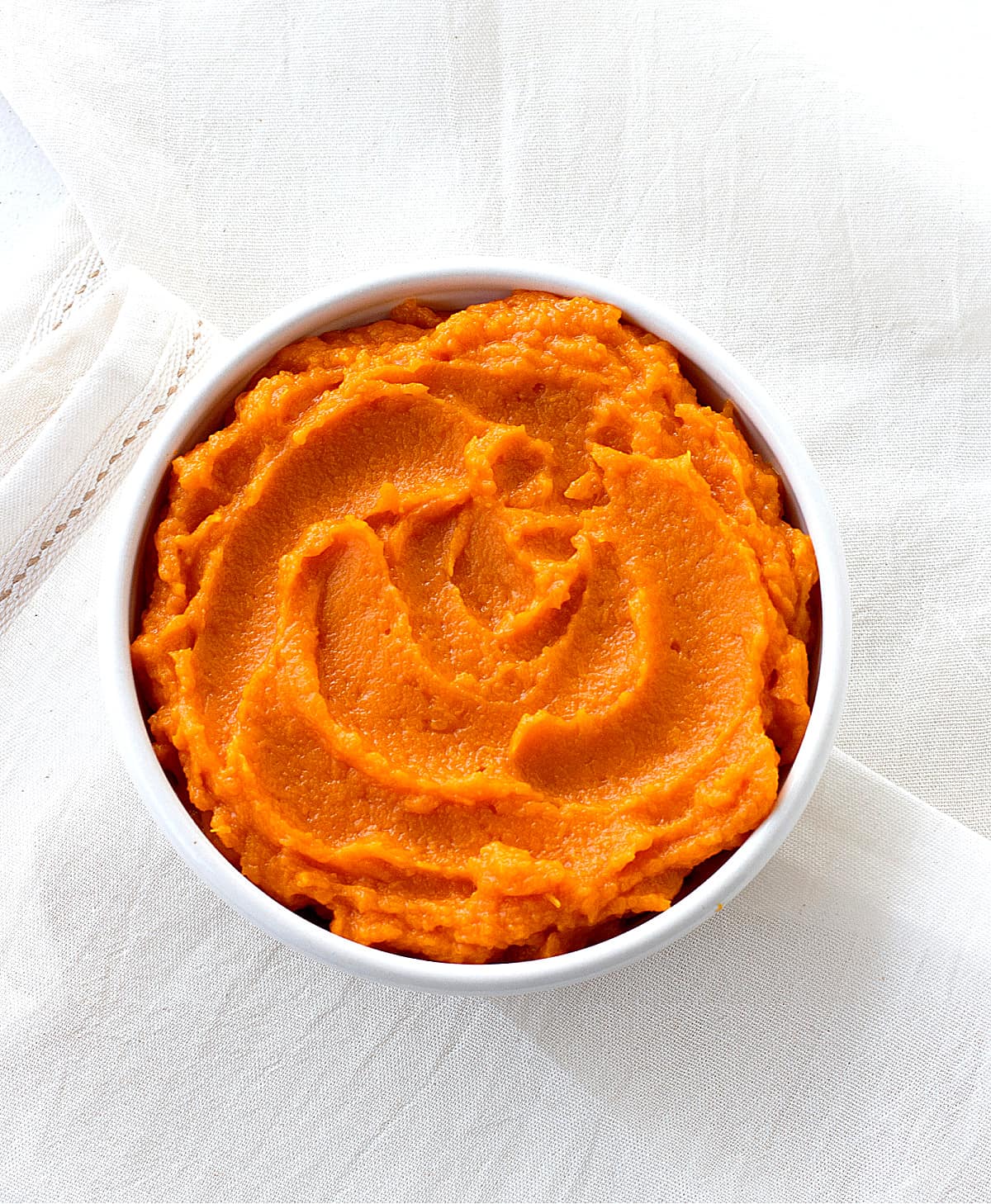
Easy and versatile
For those who want to use a more natural and fresh pumpkin puree when baking or have a hard time finding canned puree (depending on where you live, it might not be easily available), here is how you can make it at home from scratch.
It takes only 1 ingredient and 3 easy steps: bake, process, and drain.
Pumpkin puree is perfect for making any recipe where you now use canned, from the easiest pumpkin pie to a bundt cake with pumpkin, pumpkin muffins and savory dishes like pumpkin gnocchi.
Step-by-step VIDEO
FAQ
They are if you compare plain canned pumpkin with plain puree. That means pumpkin is the only ingredient in both. When you start adding extras (sugar, spices, etc.) they will probably differ in flavor and sometimes texture. Many times canned pumpkin puree is confused with canned pumpkin pie filling, which is already flavored and ready to dump onto the pie crust.
In theory, you can, but in practice, you'll be better off using pie pumpkins, which have a softer, smoother pulp. As opposed to more fibrous ones like spaghetti squash or acorn squash as the puree will probably never be completely smooth. See below for my choices.
Yes, you can! I use an immersion blender or food processor for a super smooth pumpkin puree. You can also use a potato masher or food mill, but it's a little more laborious.
What pumpkins to use
Pumpkins come in different skin colors and sizes.
- I love to use butternut squash, sugar pumpkin (the typical orange one below), or English pumpkin (the green one, which can have different names depending on where you live).
- What pumpkin doesn't work? The ones with a stringy pulp, like spaghetti squash or acorn squash, will not have a smooth consistency after it's pureed.
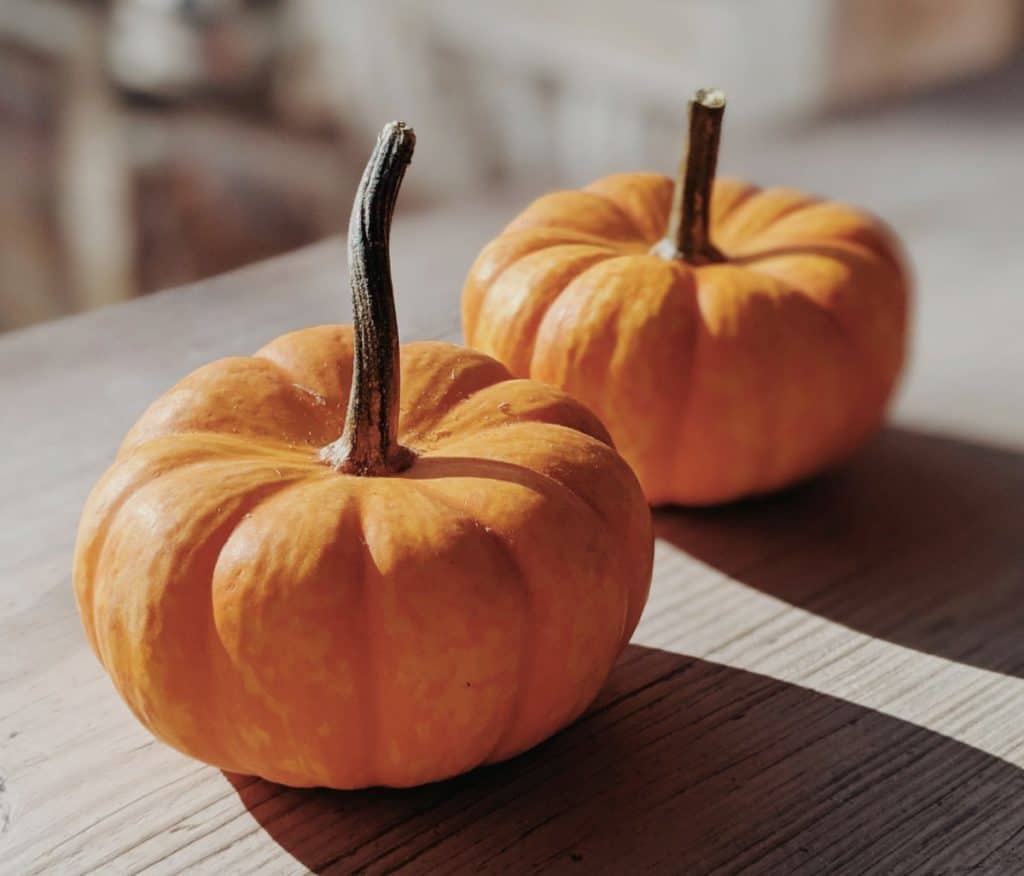
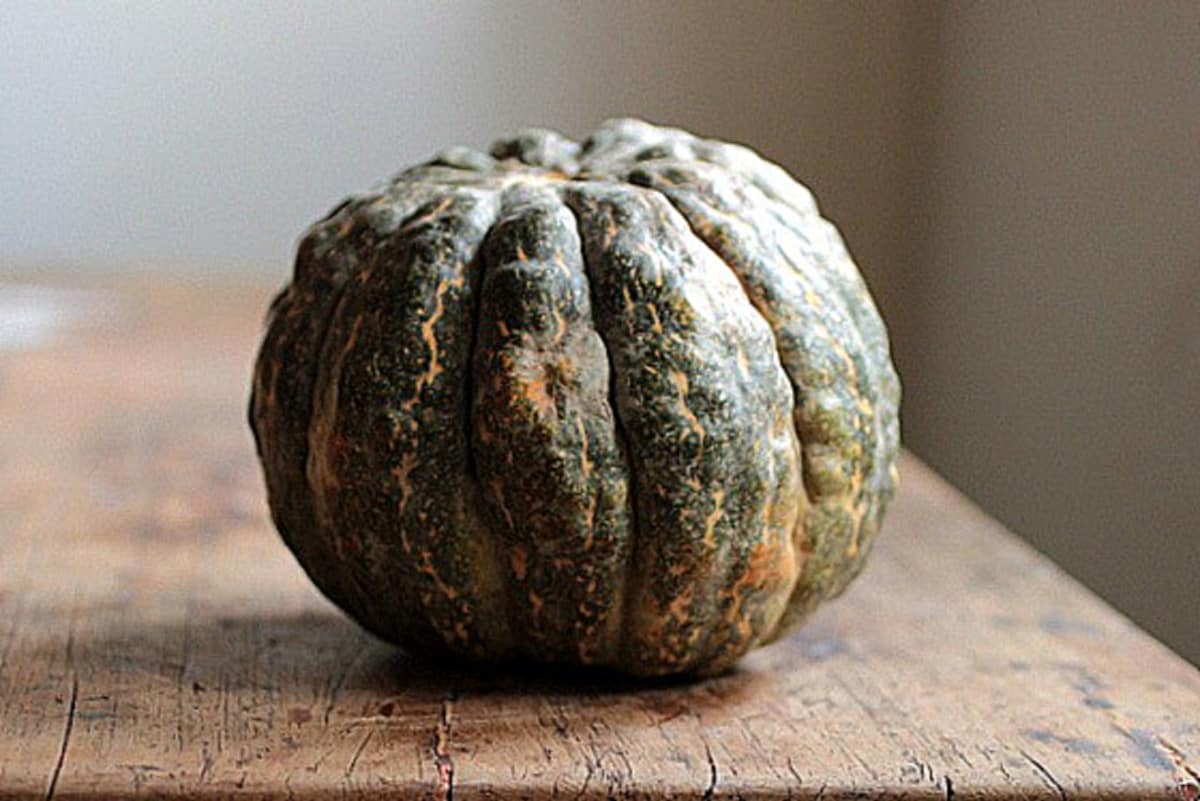
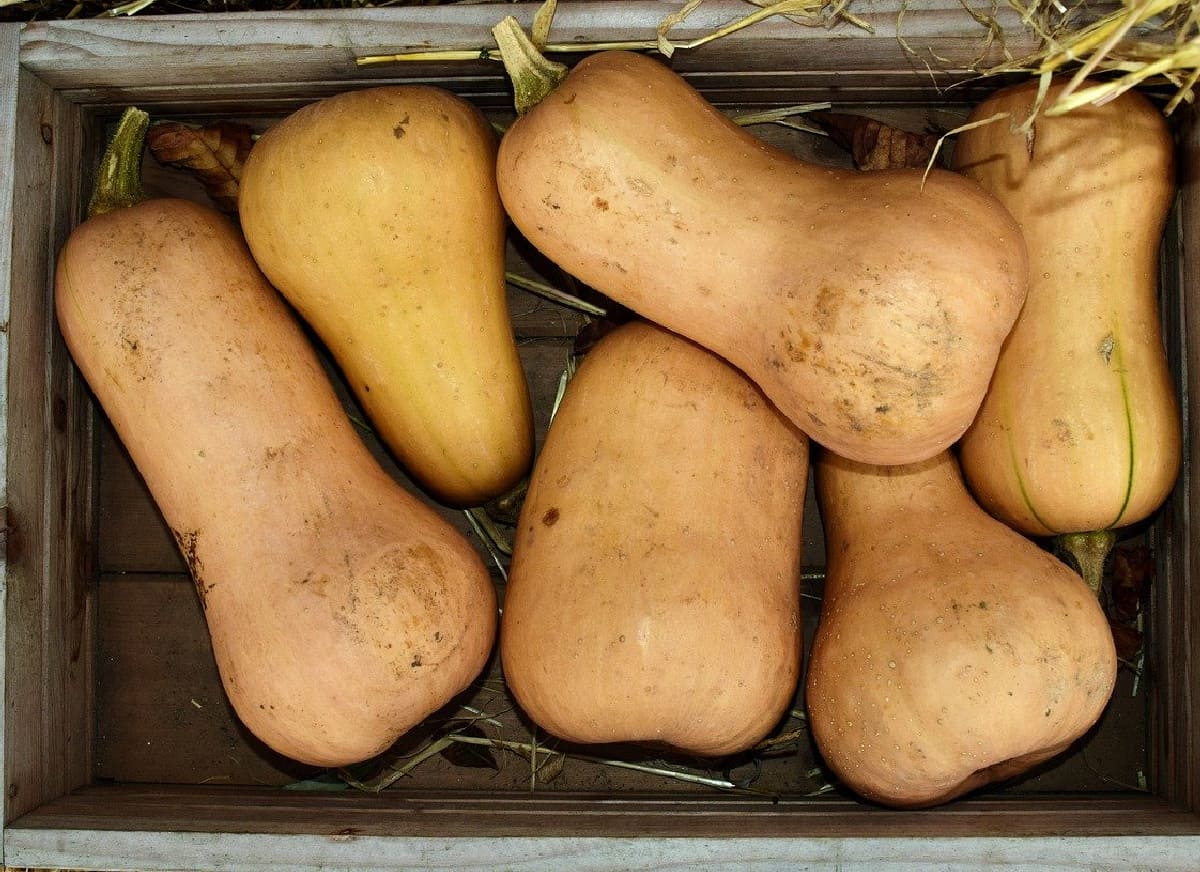
How to cook the pumpkin or squash
Oven baked:
Although there are several ways to cook it, I strongly recommend the oven. The flavor is more concentrated, retains the least moisture, and there's practically no hands-on work on your part.
- This doesn't involve any work since all you do is pop it in the oven. Sometimes I use a piece of aluminum foil to line the pan because it's easier for cleaning afterward as the juices stay in the paper and not in the pan.
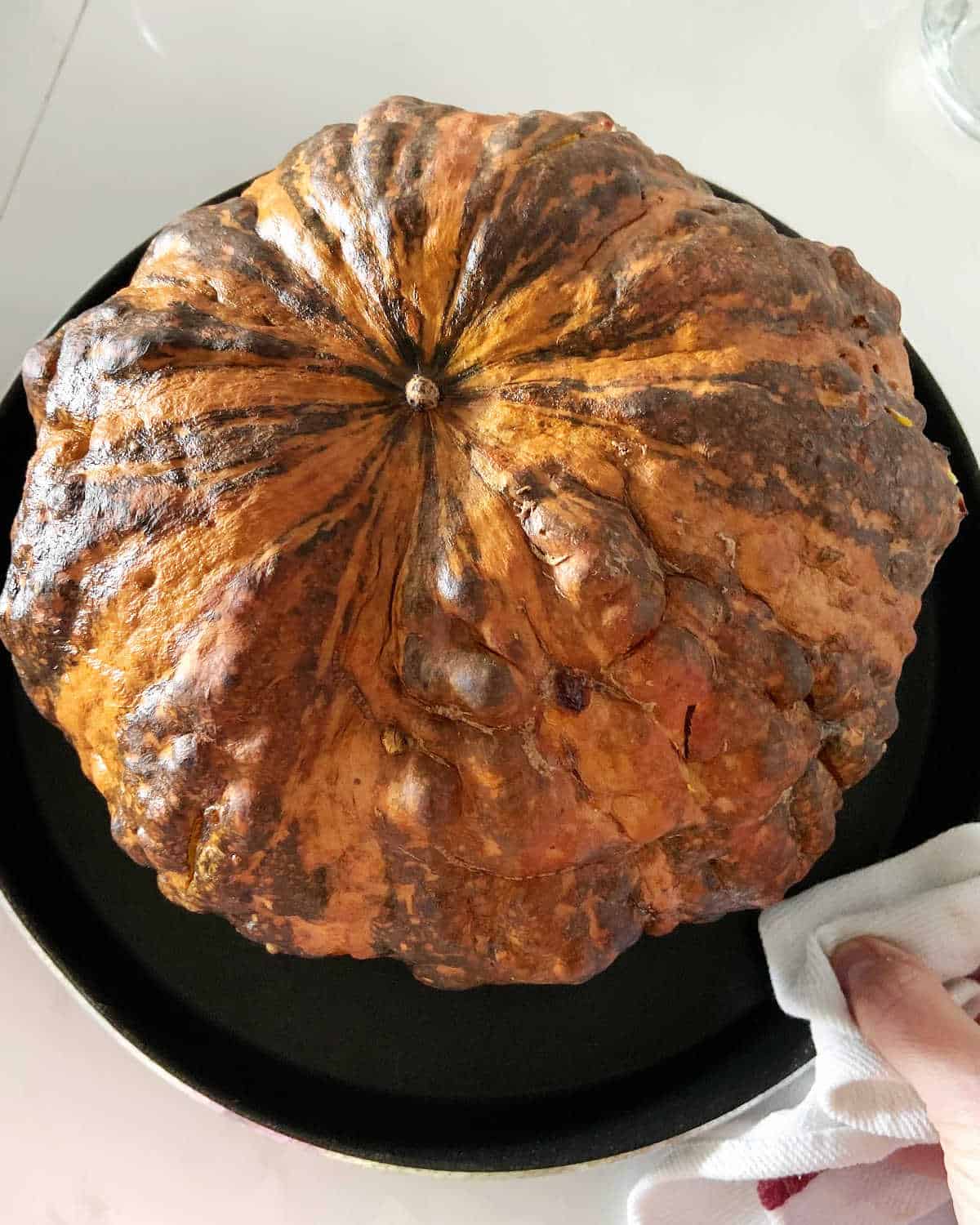
Take the whole butternut squash or pumpkin and roast it until super soft, wrinkled, and a knife easily pierces it. It should be very soft inside. The time varies depending on the size and type, but my experience is at least an hour.
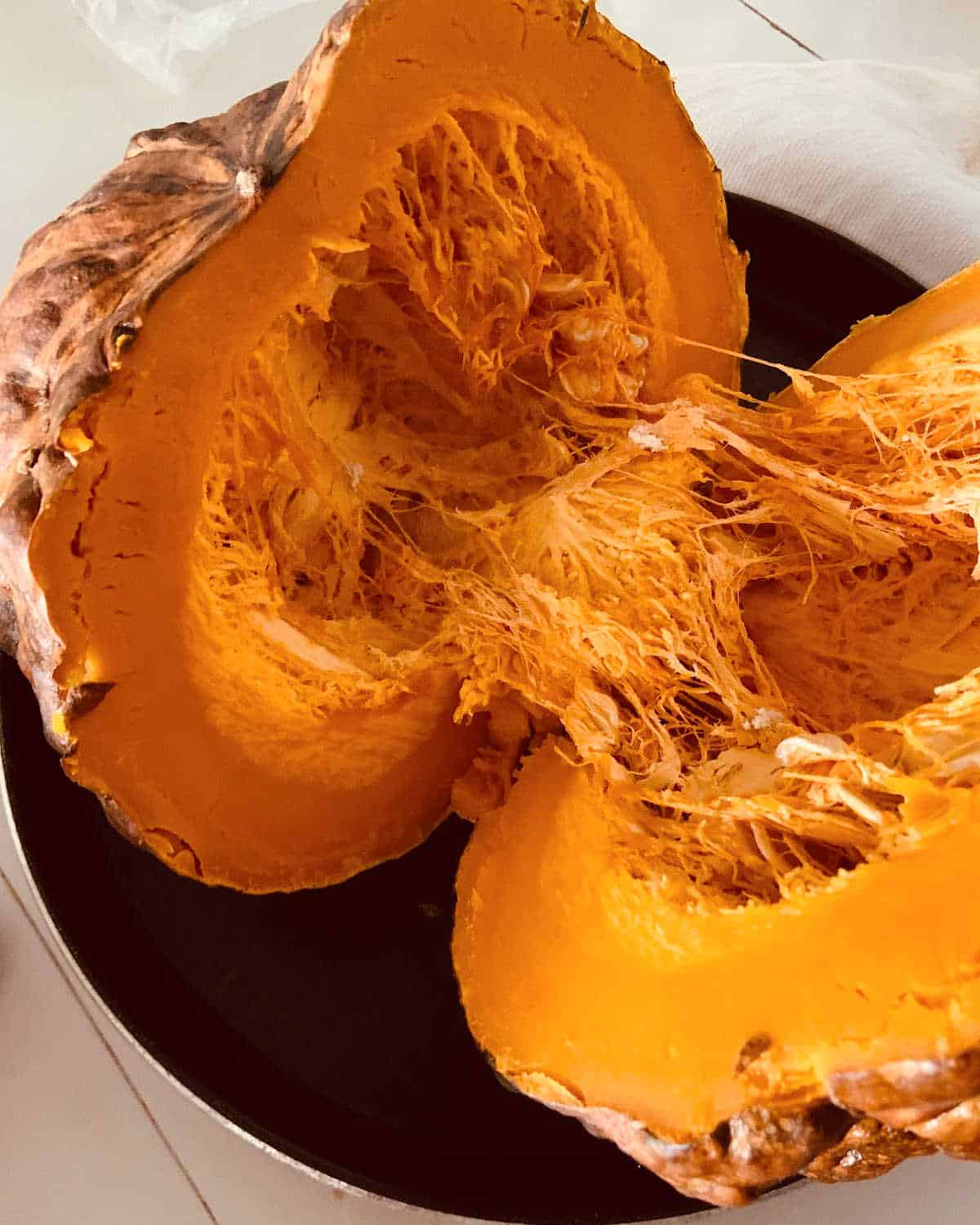
When cooled enough to handle, cut it in half and scoop out the seeds and strings with a spoon.
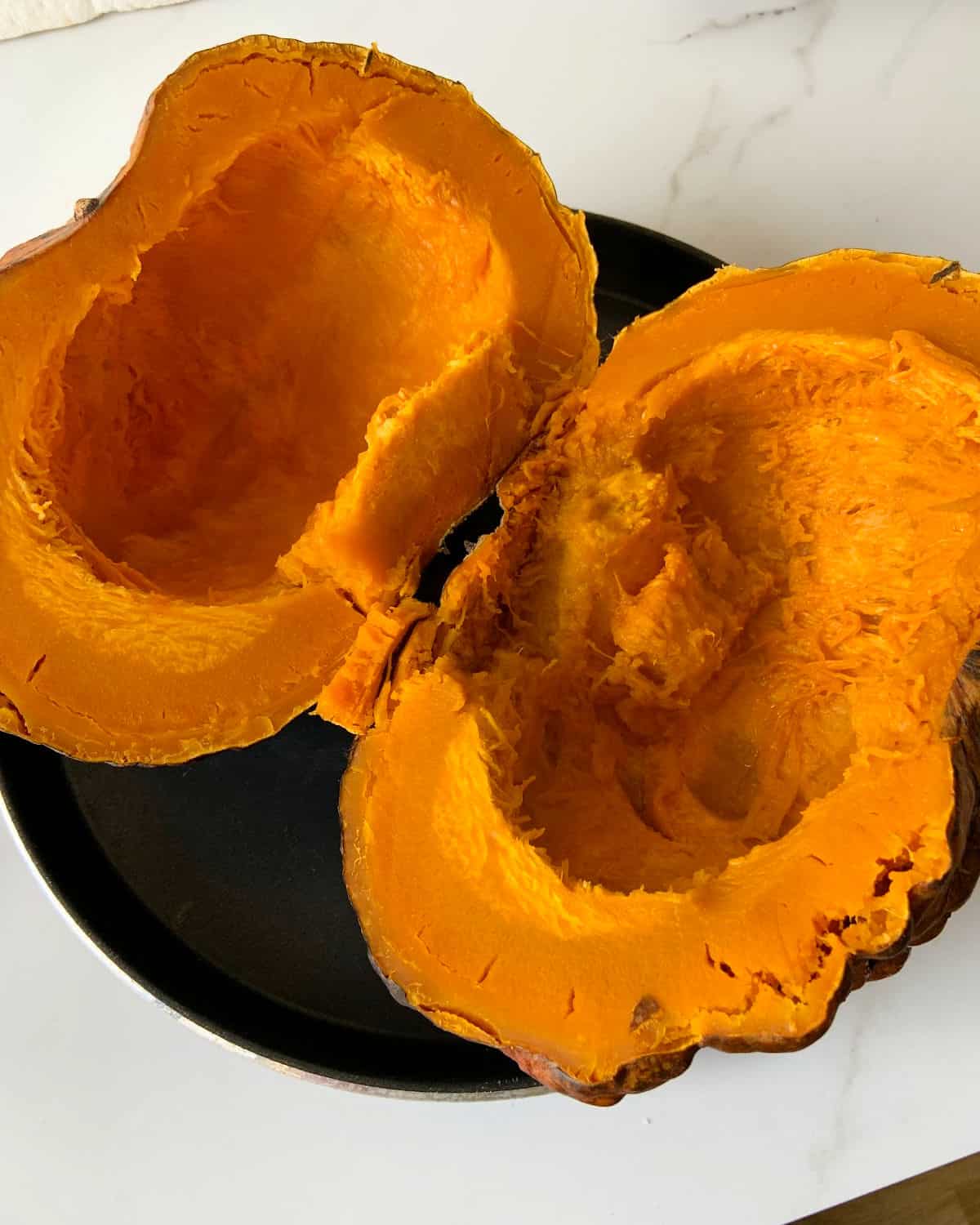
Then scoop the pulp with a spoon and place it in a large bowl if using an immersion blender to puree it.
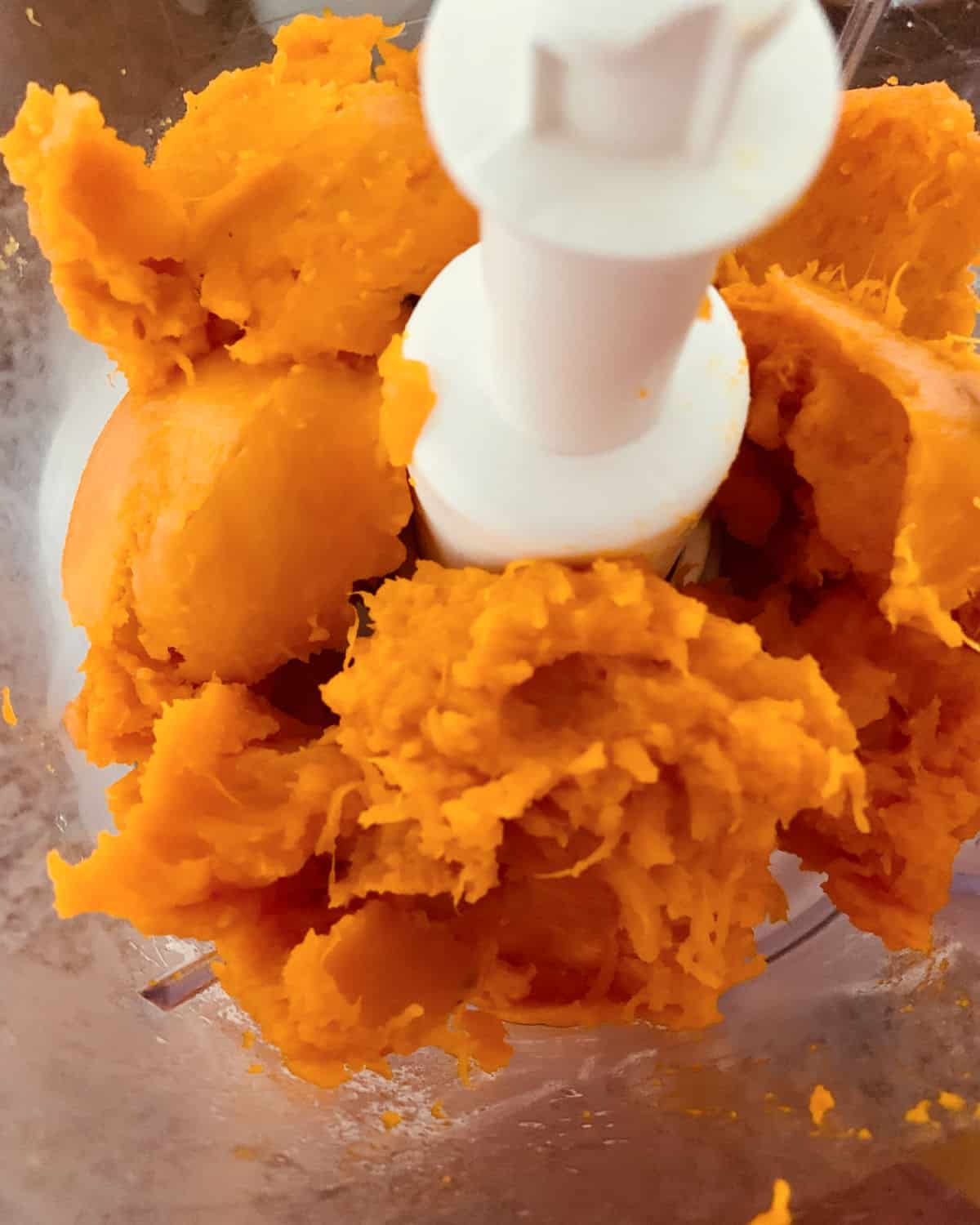
If using a food processor, scoop it directly into its bowl and process until smooth, several minutes, scraping the sides and the bottom once or twice.
Steamed or boiled:
- You can steam it until very soft and mash it. Just the pumpkin, peeled and cut into pieces. No salt or any other ingredient. I do this sometimes when I buy already cut squash or pumpkin, but it takes longer to drain. I use a steamer or a 2-piece pasta cooking pot, one that has a steamer incorporated, with an inch of water in the bottom.
- You can boil it (no salt) and then mash it, but it retains too much water, and it's not ideal for baking. Even after you drain it, it will have lost flavor.
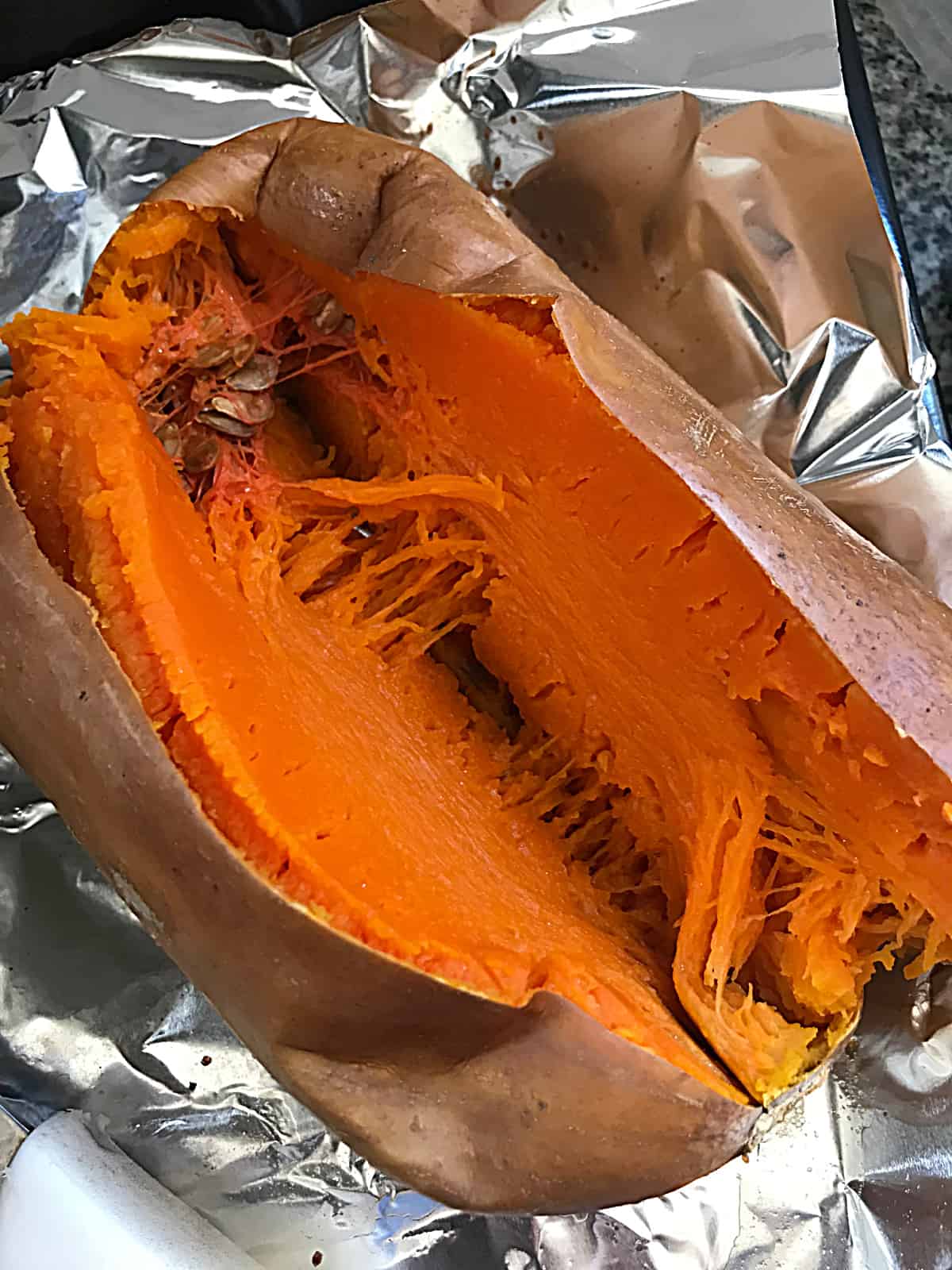
Butternut squash
My experience is that it has more water, is sweeter, and is sometimes creamier than squash.
Follow the same steps as for squash. Bake it until very tender. It will look like this when you open it. Then scoop the pulp and process it. Drain it if necessary.
Processing it
This is a highly recommended step if you want a smooth homemade puree. It might sound like an extra one, but the result is way better. And it's more a waiting game than a hands-on process.
When the pumpkin or butternut squash is so soft, you can easily pierce it with a knife, open it, remove the pumpkin flesh with a spoon, and process it first. This will make it ultra-smooth, which is perfect for your favorite pumpkin recipes.
- Food processor: it's my choice because there will be a large amount of pulp. Use the steel blade and process away until you have a very smooth consistency.
- Blender and immersion blender: they also work. Be careful because, depending on the type of pumpkin you use, it will have little liquid, and it might be harder to achieve a smooth mixture without forcing them too much.
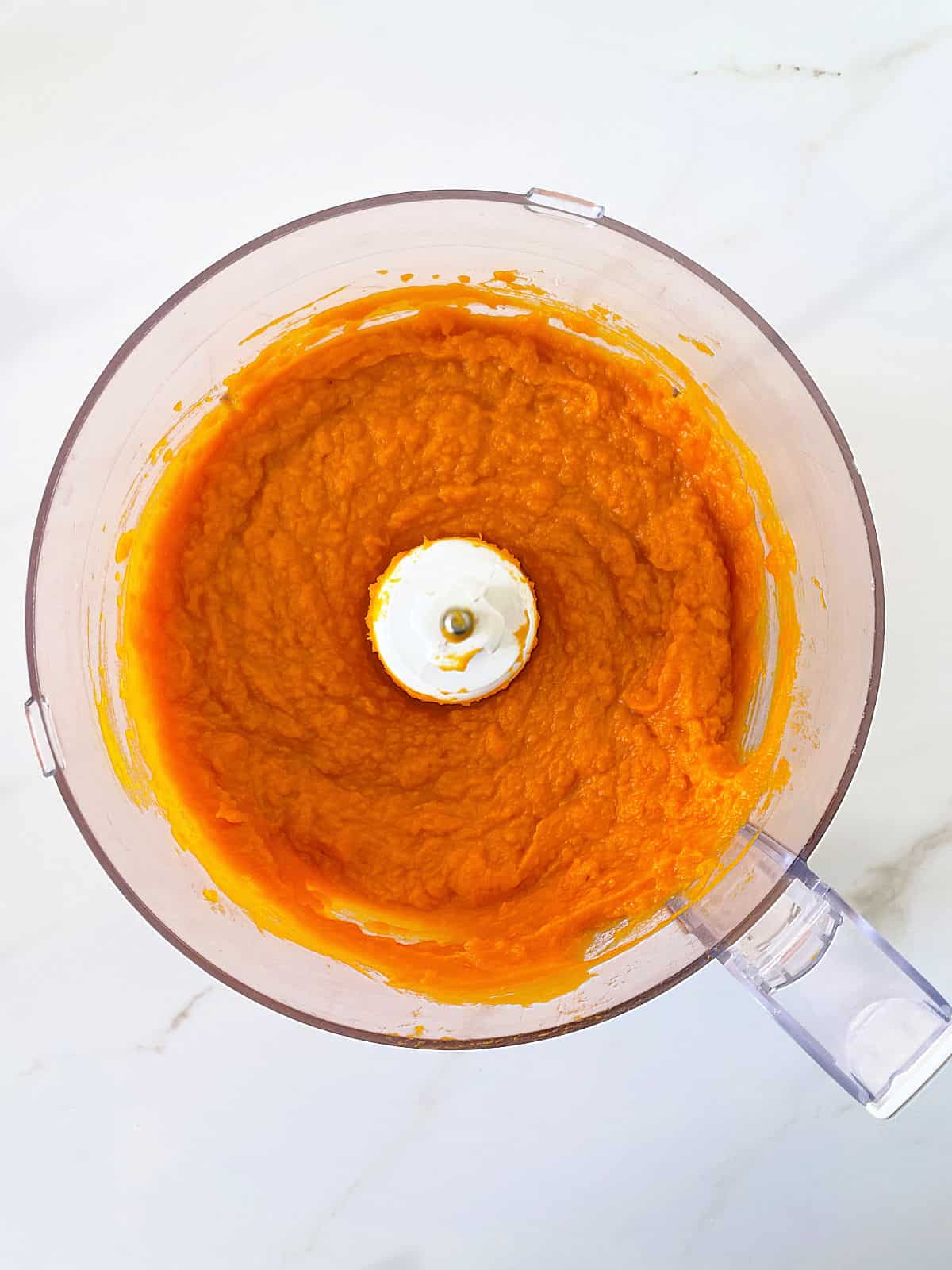
Draining
- Depending on how watery the pumpkin or squash is, it's advised to let it drain until it thickens and is similar in texture to canned pumpkin.
- You will need a bowl and a colander that leaves space in the bowl for the extra liquid to drain.
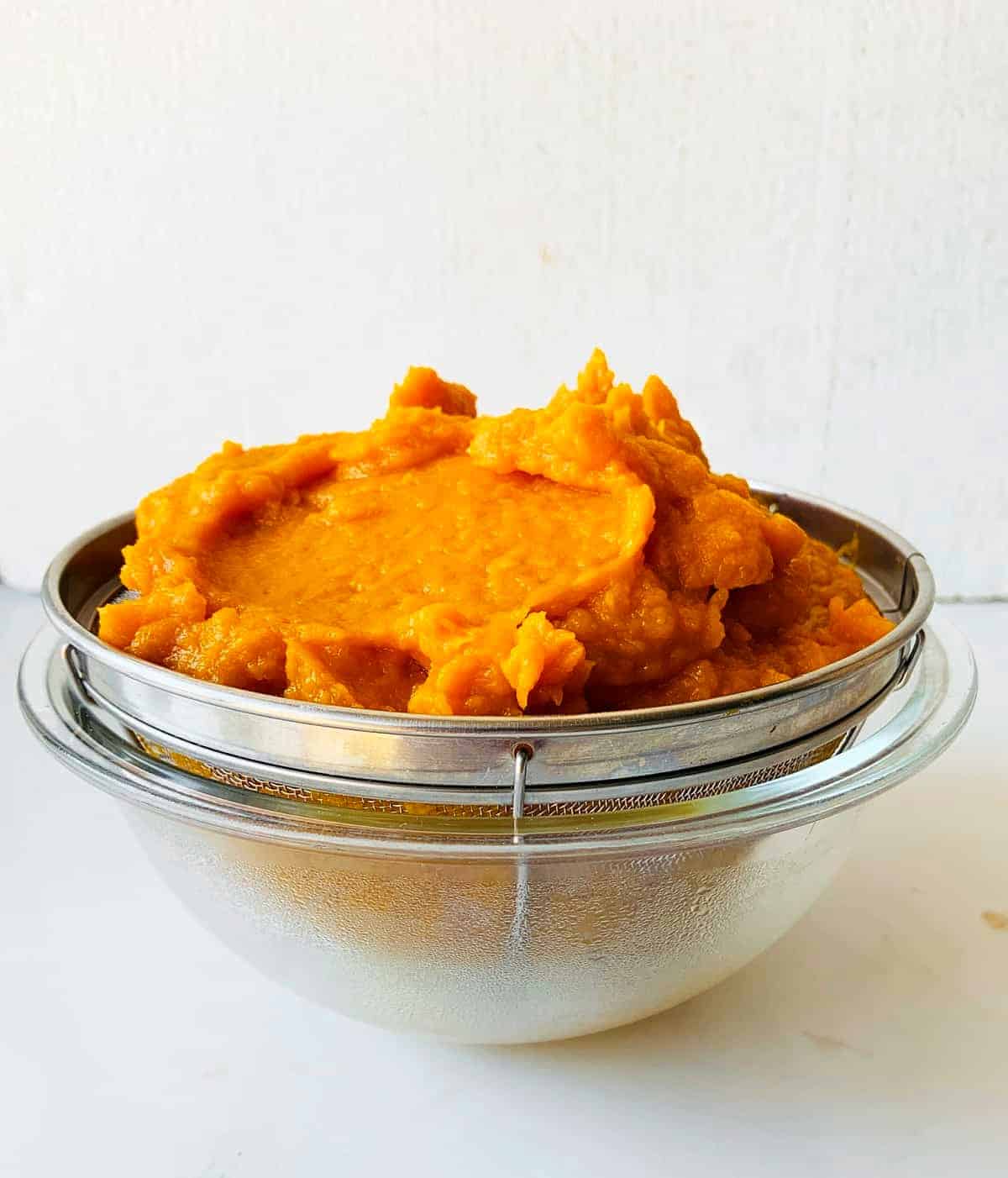
If using a medium-sized mesh (not fine as it won't drain much) you can place the colander directly over the bowl. Pie pumpkins usually are not as watery as butternut squash.
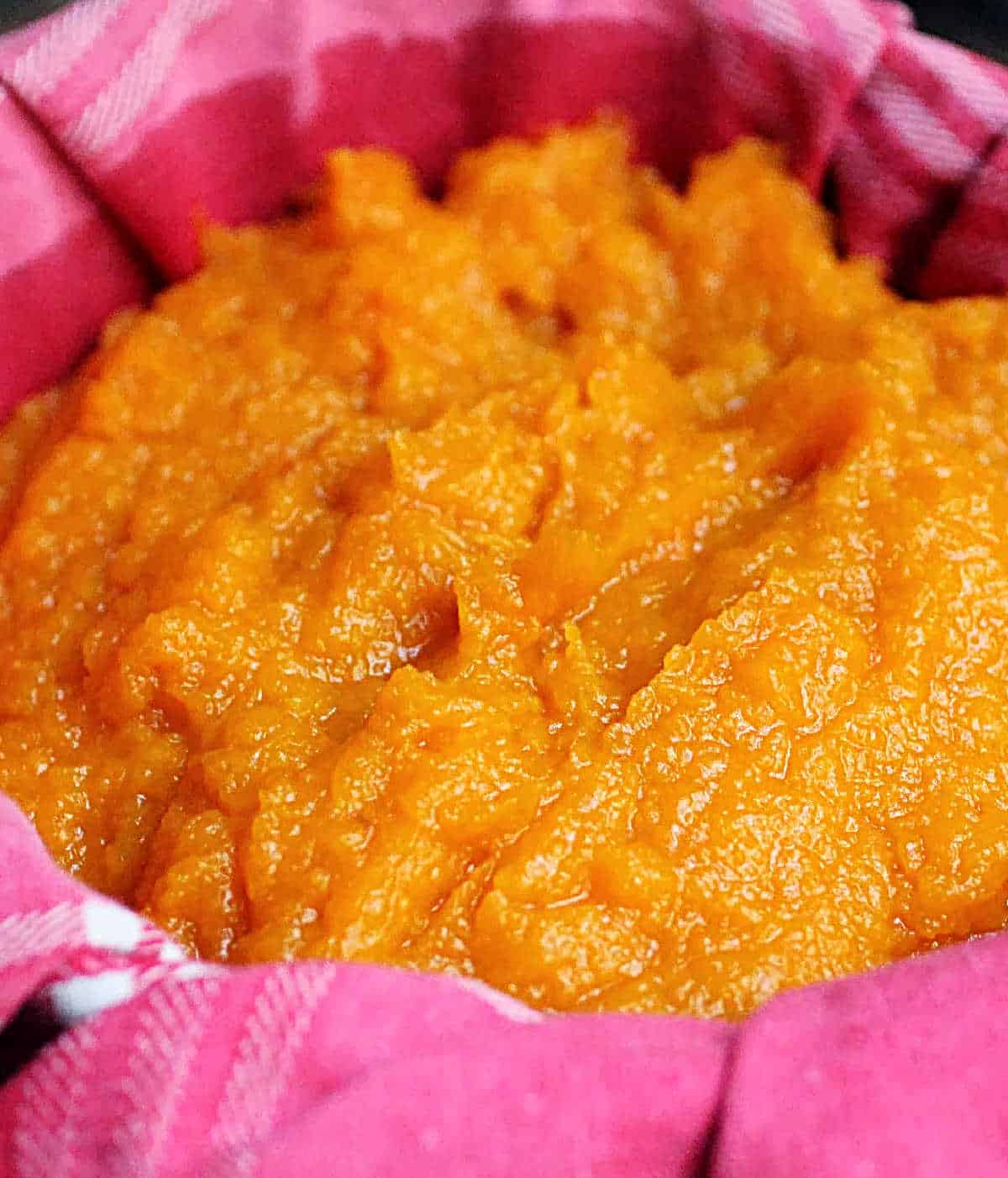
Depending on the colander and how watery the pumpkin is, I might use a cloth that I have for this type of thing.
Storing
The drained fresh pumpkin puree lasts for several days (I leave it for a week) in the refrigerator in a sealed container. Always taste or smell it before using it. You will find it's acid and mildly pungent when it starts to go bad.
You can freeze it and defrost it in the refrigerator. So make a large batch and freeze it for later use.
If you see that it collected water when it thaws, drain it before using it.
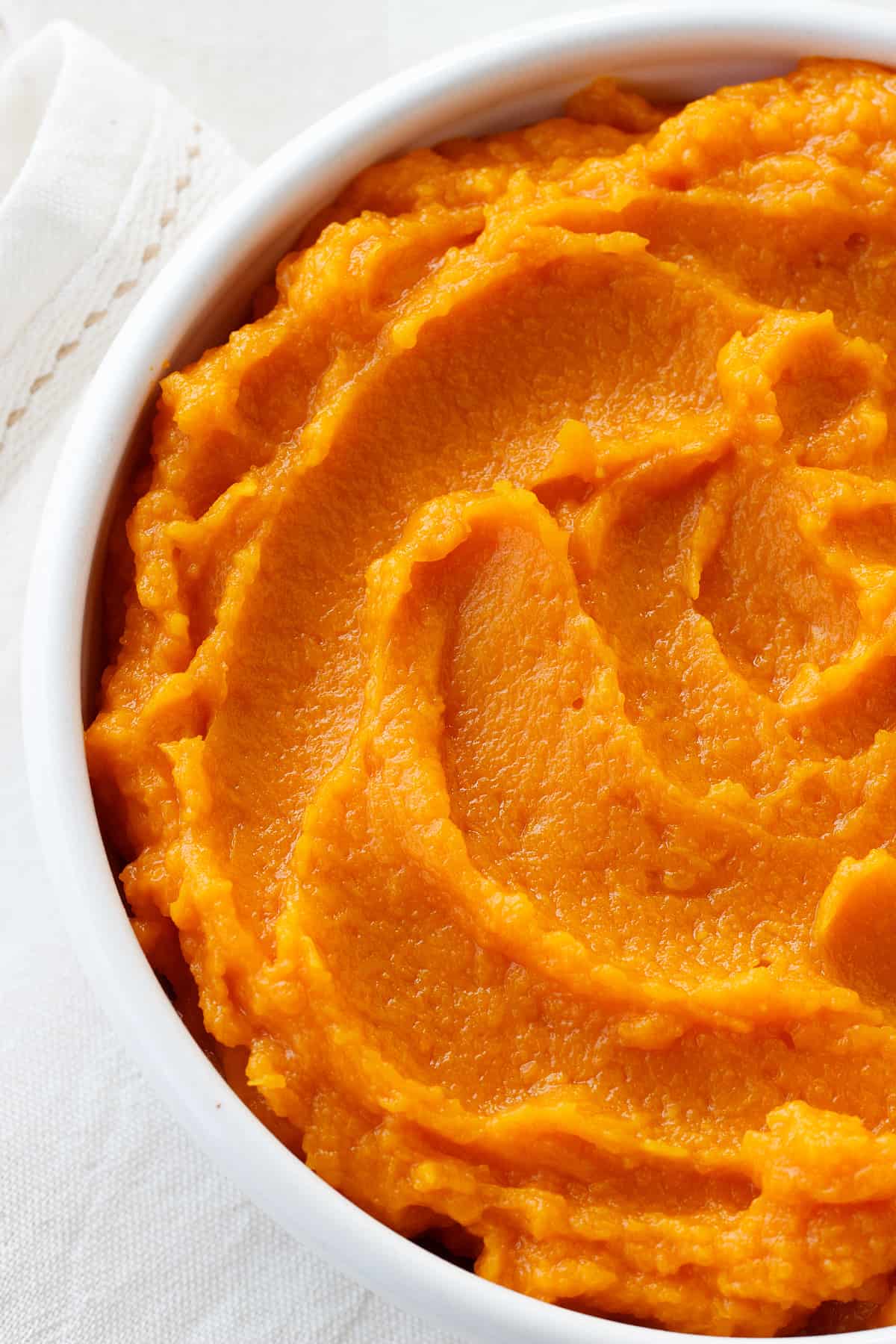
What to do with the pumpkin seeds?
Please don't throw them away!
They can be dried out and roasted with different flavors and used for salads, to top pumpkin bread before baking, and as a snack.
Find out how to roast pumpkin seeds.
Related recipes you might like:
One last thing
If you made this recipe and loved it, you can comment below and leave a five-star ⭐️ review. Also, if you had issues, let me know so we can troubleshoot together. I appreciate honest feedback and suggestions.
You can also subscribe to our FREE email series 'Baking the Best' and our regular newsletter. Or follow and save my recipes on Pinterest.
As an Amazon Associate, I earn from qualifying purchases. Read my disclosure policy.
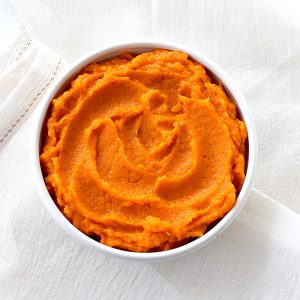
Homemade Pumpkin Puree
Ingredients
- 1 whole pumpkin or butternut squash, if using pumpkin halves see Notes below
- 1 piece of aluminum foil or parchment paper, optional
Instructions
- Preheat oven to 350°F (180°C)
- Wash and scrub the pumpkin or squash, and put it on a baking sheet. You can line it with aluminum foil or parchment paper for easier cleaning afterward.
- Baking it: it takes a while, at least an hour, sometimes half an hour more (it depends on the size and type of pumpkin) until it's fork-tender or can be very easily pierced with a knife. The inside should be very soft.
- Remove from the oven and cut it in half.
- Remove the pulp with a spoon and put it in the bowl of the food processor.
- Processing: process until it's creamy. It will still be very wet, but that is fine.
- Transfer to a colander set atop a bowl. You can add a cheesecloth before adding the pulp.
- Draining: let the pumpkin pulp drain until the puree is thick. It will take a while.
- Transfer the thick puree to a sealed container and keep refrigerated until ready to use. It keeps for several days.
- Or keep it in the freezer for a month in an airtight container.

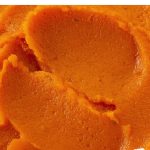

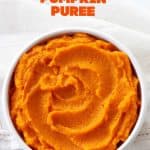
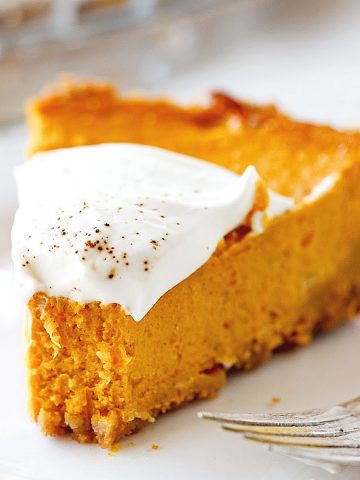
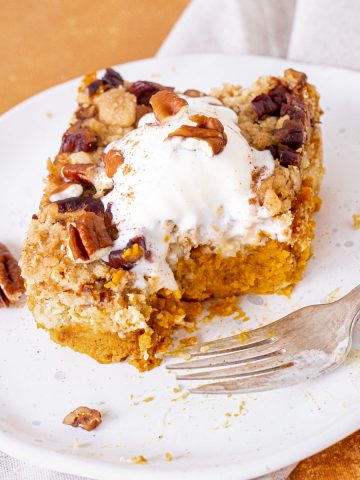
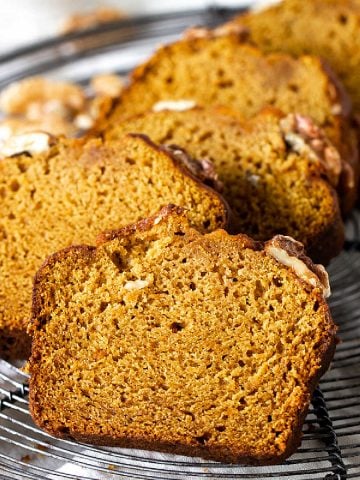
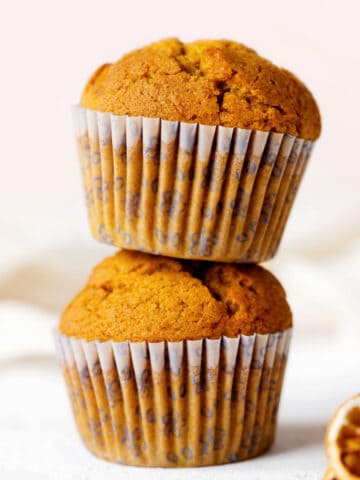
Rate and review this recipe